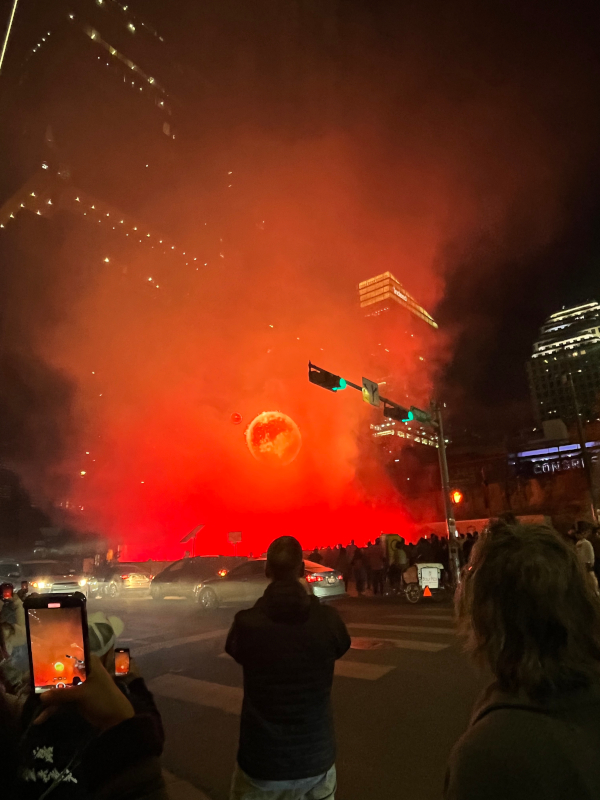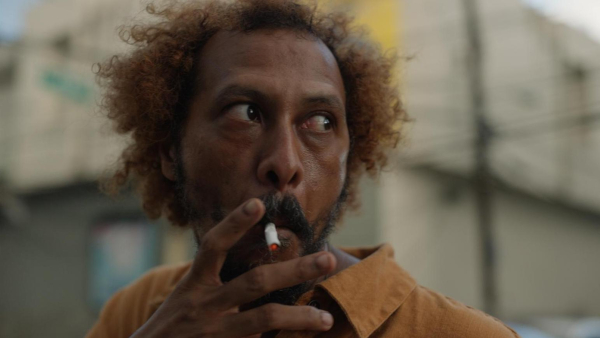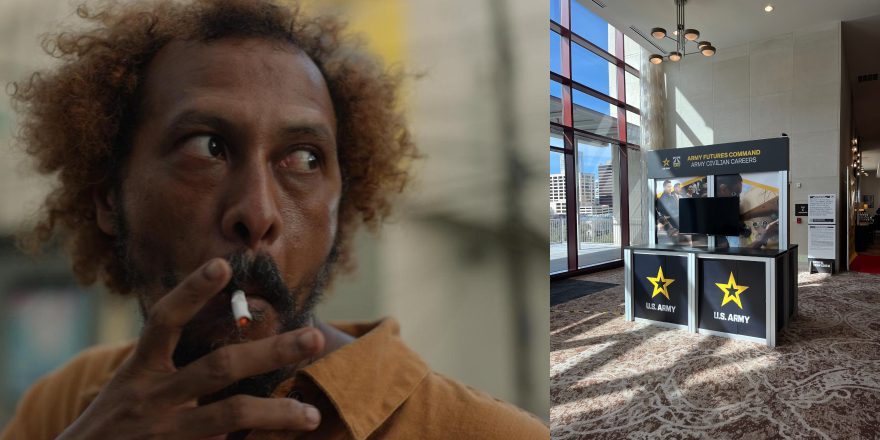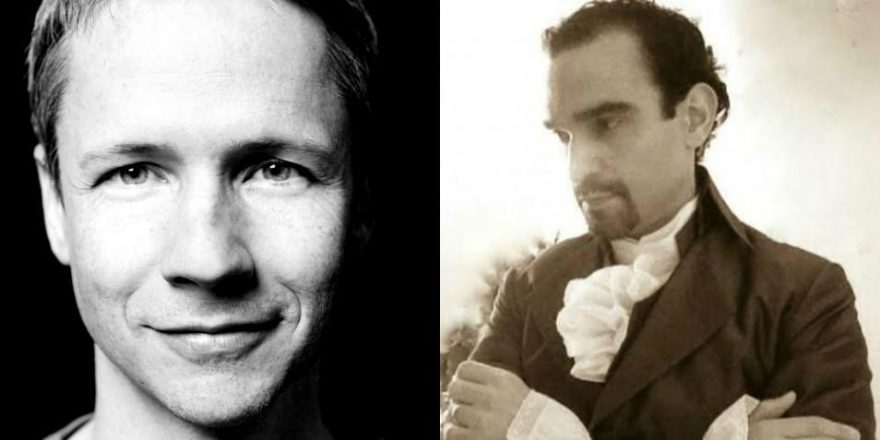My last day in Austin, the organizers of SXSW took to the X-verse. Enough bands were pulling out of the festival over its weapons manufacturer sponsors – not to mention one of six “super sponsors” being the U.S. Army itself – that Texas governor Greg Abbott felt the need to beat his chest with a “Bye. Don’t come back” tweet. SXSW’s official account pursued a foot-in-mouth thread that attempted to distance the festival from the governor’s stance with such nuggets as, “The Army’s sponsorship is part of our commitment to bring forward ideas that shape our world,” and “[The defense industry] are often leaders in emerging technologies.” The thing is, I believe them! From my time at the conference, adrift in a sea of orange Interactive badges, I felt at the intersection of several industries in flux, grasping for the next big thing. And by the next big thing, I of course mean where the money is going.

I followed that frenetic energy to the XR Competition, which is held in the ballrooms of the Fairmont Hotel, and learned that I would not be able to access any of the exhibits. See, I had to queue by at least 10 a.m. that morning to sign up on an iPad when they opened at 11 a.m. to receive an assigned slot so I could return later that day to put on a headset. I cut my losses and ventured upstairs to the one quasi-collective experience, The Golden Key, sponsored by Deloitte. A volunteer encouraged me to wait in line to answer questions on an iPad. My responses, through an AI pipeline, would eventually work their way into the garish three-panel tapestry standing before us, either as a paintbrush animation or via the rambling storybook voiceover. I took my leave, but The Golden Key had the last laugh, winning the juried XR Competition.

Deloitte’s dollars may have been better spent behind the winner of the Documentary Feature Competition, Grand Theft Hamlet. Shot entirely within Grand Theft Auto Online, and therefore, in a game engine, it satisfies the lust for new technologies while affirming the significance of real human connection. During COVID, co-director/actor Sam Crane and his close friend Mark Oosterveen sought refuge from dwindling career prospects in the online game. Whilst on a breather from gunning down NPCs, the duo’s avatars stumbled upon an outdoor theater, built to resemble the Hollywood Bowl against the backdrop of “Vinewood.” Being out of work actors, Sam and Mark decided it could be a brilliant idea to stage a play – Hamlet – and lead a series of auditions for a cast of characters whose avatars included alien lizards and hookers.
The duo enlisted Sam’s partner, co-director Pinny Grylls, as the documentarian, who filmed the action through her avatar’s iPhone, and dutifully received the film’s camera credit. Mise-en-scène is not Grand Theft Hamlet’s talking point – it’s more the desire for community and closeness in a world where our every exchange is mitigated by a machine. While the game facilitates collaboration in the staging of the play, it also underscores the world’s limitations as cast members come up against conflicts in their real lives. Thematically tender, the film is also quite funny, and I was grateful that Grylls, who has hearing loss, chose to close caption it, making it easier to discern the dry commentary over the audience’s roaring laughter.
Back at the conference, I caught up with John Cameron Mitchell, whose forthcoming podcast series, Cancellation Island (which he co-created with Michael Cavadias), is the kind of divisive work that struggles to receive funding in the (U.S.) filmic space. Cameron Mitchell assured a fan who pressed the issue that he was not making any concessions, but I personally would like to see Holly Hunter as a wellness guru lording over rehab for canceled people with my eyeballs. The both/and of the equation is that it’s great Cameron Mitchell is adapting and finding new avenues to tell his stories, and I would rather than not we receive more work interrogating the notion that, in his words, “cancellation is just one symptom of a world obsessed with narratives of identity and conspiracy theory to deal with our existential panic about climate change and late-capitalist collapse.”
Mark Duplass was at the festival, almost 20 years after The Puffy Chair launched his career there, screening four TV pilots he and his brother Jay independently produced through their company, Duplass Brothers Productions. At the Q&A, he spoke about how the mid-budget TV show (much like the mid-budget studio film before it) is collapsing, lamenting that we were losing “the world where Phoebe Waller-Bridge and I May Destroy You came from.” And so his company made the gamble to make four whole TV shows without distribution lined up. It’s also a case of both/and: disconcerting that yet another space for personal filmmaking is folding, but heartening that the Duplasses are trying to throw their weight behind enough projects to try to keep the door open. The standout from the showcase was The Broadcast, Natalie Palamides and Courtney Pauroso’s tightly edited take on a white cyc dystopia in which two dubious scientists are the anchors of the nightly news. Get Adult Swim on the horn.

If you’re still here through the doom and gloom, I’m happy to report that SXSW 2024 did have some exciting, straight-up, old-fashioned films. I went into an 11 a.m. screening of Bionico’s Bachata, not knowing much other than it was a section sponsored by MUBI and about a crack addict. I was met with a wild mockumentary from the Dominican Republic that had a touch of Guy Ritchie and a dash of early Sean Baker, but mostly was bursting with self-confidence. The set-up of a monied film crew following the broke, drug-addled Bionico (Manuel Raposo, great and grounding) and Calvita (El Napo, bonkers in his first ever role) in their daily escapades might get some folks shifting in their seats, but the filmmaker, Yoel Morales, skirts accusations of exploitation by weaving them into the narrative framework. At one point, someone from the film crew hands Bionico a bullet-point list of actions he should take so they have something to capture. This gray area is also formally folded into a sequence when Calvita becomes the de-facto documentarian, awkwardly wielding a camera to capture a drug deal gone wrong. When I think “mockumentary,” observational handheld, fast zooms and overcompensatory cinematography come to mind, but Bionico’s Bachata is wild, immersive and iridescent.
Plotwise, the action revolves around Bionico preparing for the return of his paramour, La Flaca (Ana Minier), from rehab. We track his several failed attempts at getting clean, but it’s the propulsive filmmaking, flitting from Bionico’s childlike delusions to the dire realities of his cyclical being, that is what one hopes to find at a major film festival.
A good chunk of Bionico’s team flew to SXSW from the D.R., and of the very solid shorts programs I attended, a handful of filmmakers were in from the U.K. and Europe. The reason to pay an arm and a leg to get yourself to Austin is, of course, for the promotion and connections. Even if you don’t have a film in the festival, you might find yourself at an informal post-screening bar hang where you meet other filmmakers and, as they say, “expand your network.” But this becomes a greater ask, year after year, when there is less of a sustainable industry structure around the filmmakers that aren’t there for a red carpet premiere. At the time of this writing, there have been no (announced) film acquisitions out of the festival. And so, it becomes a game of roulette, where the only way to increase your odds is to bet, time and again, on yourself and your work.








